New Contemporaries is the ultimate launchpad for emerging and early-career artists in the UK. From a flood of submissions, 35 artists have been handpicked by a panel of art world power players to feature in this year’s lineup. Alongside the exhibition, artists also have access to exclusive mentoring, talks, and workshops through New Contemporaries’ Bridget Riley Artists’ Development Programme.
The first leg of the show kicked off in Plymouth across KARST, The Levinsky Gallery, and MIRROR, before making its way to London last week for a dazzling 75th-anniversary opening at the ICA. You can find all the featured artists and their work online here, or better yet, head to the ICA and see it up close.
Among the incredible talent on display, today we are shining a spotlight on 7 artists from the show who we think are worth a closer look. With a mix of new discoveries and past favourites, these artists are firmly on our radar, and we can’t wait to see what they achieve going forward.
Thinking about throwing your hat in the ring for next year’s New Contemporaries? Scroll to the end for the application details.
Without further ado, introducing…
Max Boyla (b. 1991) @actually_maxboyla
2019–2023, Postgraduate at the Royal Academy Schools, London
Max Boyla’s work navigates the tension between materiality and abstraction. His chosen medium for Fire of Love (2023)—oil on satin—infuses the work with a distinctive iridescent, ethereal glow. By choosing satin, a petroleum byproduct, as his canvas, Boyla embeds a deliberate duality within his practice. The industrial origins of the material are juxtaposed with its luminous, almost transcendent aesthetic, inviting a broader reflection on contemporary disillusionment and the paradoxes of modern existence.
Boyla’s work has garnered significant attention. We first came across Fire of Love at the RA Schools show in 2023, and he has since had work featured in a group exhibition at LVH, where his paintings were shown alongside those of Albert Oehlen, Andy Warhol, Christopher Wool, and Rudolf Stingel.
Karen David (b. 1976) @karensdavid
2018–2024, PhD Fine Art, University of Worcester
Paintings you want to eat!
Karen David’s work explores the intersection of materiality, fiction, and nostalgia through her intricate, tactile paintings. Using a cake decorating extruder, she pipes paint directly onto the covers of found books, creating undulating surfaces that evoke patisserie, seashells, and fossils. These delicate, sculptural textures are brought to life with neon and iridescent pigments, applied whilst the paint is still wet, resulting in works that shimmer with an otherworldly allure.
David’s recent series is rooted in the narrative of a fictional commune in Colorado Springs. Each piece incorporates a found book, reimagined as part of the commune’s library. Arcadia (Season 6, Episode 15) (2024) features Jane Goldman’s The X-Files: Book of the Unexplained, Volume 2 (1997), a guide to the cult 1990s TV series where FBI agents Mulder and Scully investigate paranormal phenomena. By blending nostalgia with speculative storytelling, David invites viewers to engage with themes of belief, scepticism, and the fantastical possibilities of the unknown.
Beverley Duckworth @bev.duckworth
2020–2024, MFA Fine Art, Goldsmiths, London

A standout at last year’s Goldsmiths degree show, Beverley Duckworth’s Residue (2024) is both visually striking and a poignant commentary on regenerative composting. The piece features scraps of discarded fabric from charity shop rejects, sewn together and covered with watercress seedlings nurtured to grow into small plants. Residue symbolises the power of transforming waste into new life.
Duckworth has recently exhibited in both China and London and was awarded the prestigious Gilbert Bayes Trust Award in 2024.
Georgia Dymock (b. 1998) @georgiadymockart
2021–2023, MFA Fine Art Painting, Slade School of Art, London
We first came across Georgia Dymock’s work at her 2022 solo exhibition, Georgia Dymock: Under Our Together, at JD Malat Gallery, accompanied by a large-scale projection on the façade of the Flannels flagship store on Oxford Street in collaboration with W1 Curates. Since then, her practice has continued to evolve.
Dymock’s work conjures mystical worlds inhabited by voluminous, anthropomorphic figures. Contorted yet oddly familiar, her forms explore themes of gender, sexuality, fantasy, and the subconscious. Working seamlessly across digital and analogue media, Dymock creates her compositions using programming and illustration tools before translating them onto canvas, where their surreal and dreamlike qualities come to life.
Sara Graça (b. 1993) @saragraca123
2022–2024, MFA Fine Art, Goldsmiths, London
Sara Graça approaches her art making process with the rhythm and intuition of composing a song. Her work weaves together traditional, artisanal, and spiritual practices with the material systems of consumer production, resulting in pieces that balance intricate craftsmanship with a distinctly contemporary aesthetic.
In Card Holder 2, Graça tells a layered story: a woman walking, her high heel half-slipped off—perhaps in a rush. Grounded yet situated by a window, her position blurs the line between interior and exterior. The beaded composition, delicately suspended, conveys a fragile tension, as though the slightest gust of wind could shift its alignment and unravel the illusion entirely. Through this interplay of form and fragility, Graça captures fleeting moments that resonate with both presence and impermanence.
Hazel O'Sullivan (b. 1998) @hazelosullivanart
2021–2023, MA Fine Art, Chelsea College of Arts, London
Hazel O’Sullivan is a multidisciplinary artist whose practice spans sculpture and painting, often bridging the gap between the 3D and 2D through the language of architectural features and blueprints. Her work explores themes of cultural identity from an Irish perspective, blending ancient folklore with a futuristic aesthetic.
At the ICA, her painting Sidhe—an Irish word derived from "Shee," meaning fairy beings or places connected to the Otherworld—acts as a portal between realms. O’Sullivan frequently incorporates Irish titles and folklore into her works, using these narratives to examine the enduring impact of colonialism and neoliberalism on contemporary Irish identity. Through this dialogue between the past and the future, her work reimagines cultural heritage within a modern context.
Varshga Premarasa (b. 2003) @varshga
2021–2024, BA Fine Art, Middlesex University
Varshga Premarasa’s work combines whimsical imagery with darker, surreal narratives, drawing from her parents' experiences in Sri Lanka. Her paintings reinterpret these stories, presenting a distorted lens through which personal memories and familial histories are explored.
In Little Golden Memories (2024), Premarasa merges multiple styles, juxtaposing flat, colour-blocked backgrounds with painterly segments of white. Hyperrealistic apples are positioned alongside an oversized frog, disrupting traditional notions of depth and scale. This playful yet disorienting composition transforms an inviting residential scene into one infused with subtle intrigue and unease.
New Contemporaries is supported by Arts Council England, Bloomberg Philanthropies, Bridget Riley Art Foundation, Henry Moore Foundation, TFA London and Art Fund.
Submissions for New Contemporaries 2025 will open on March 3, 2025. Applications are open to UK based artists within the first 7 years of their professional practice. Find out more information about how to apply here.

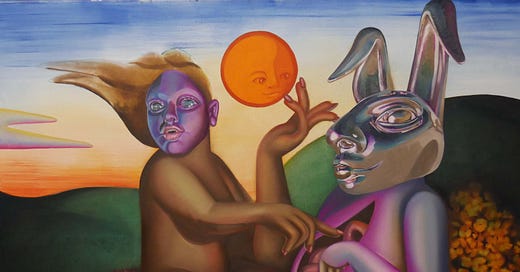


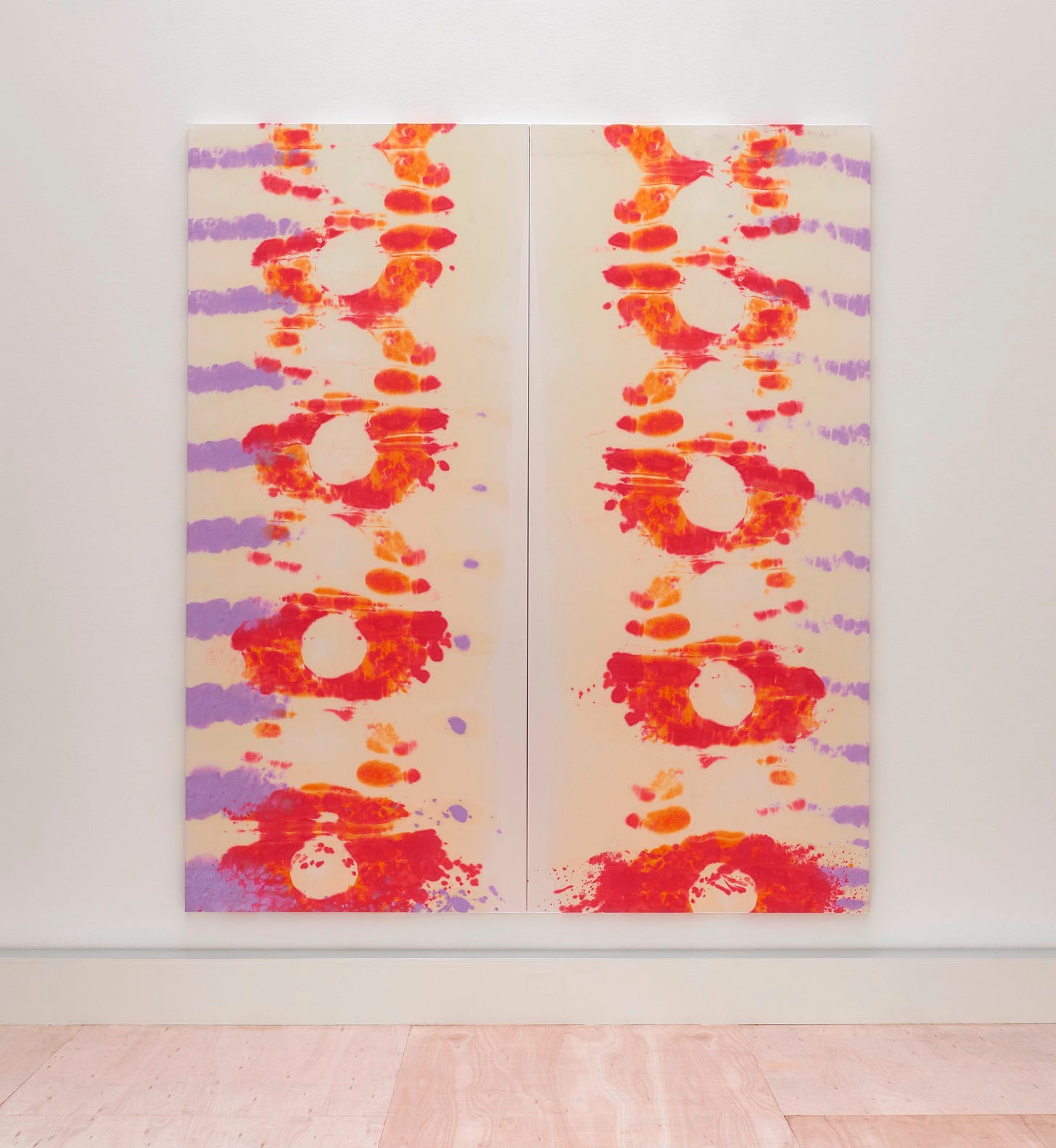
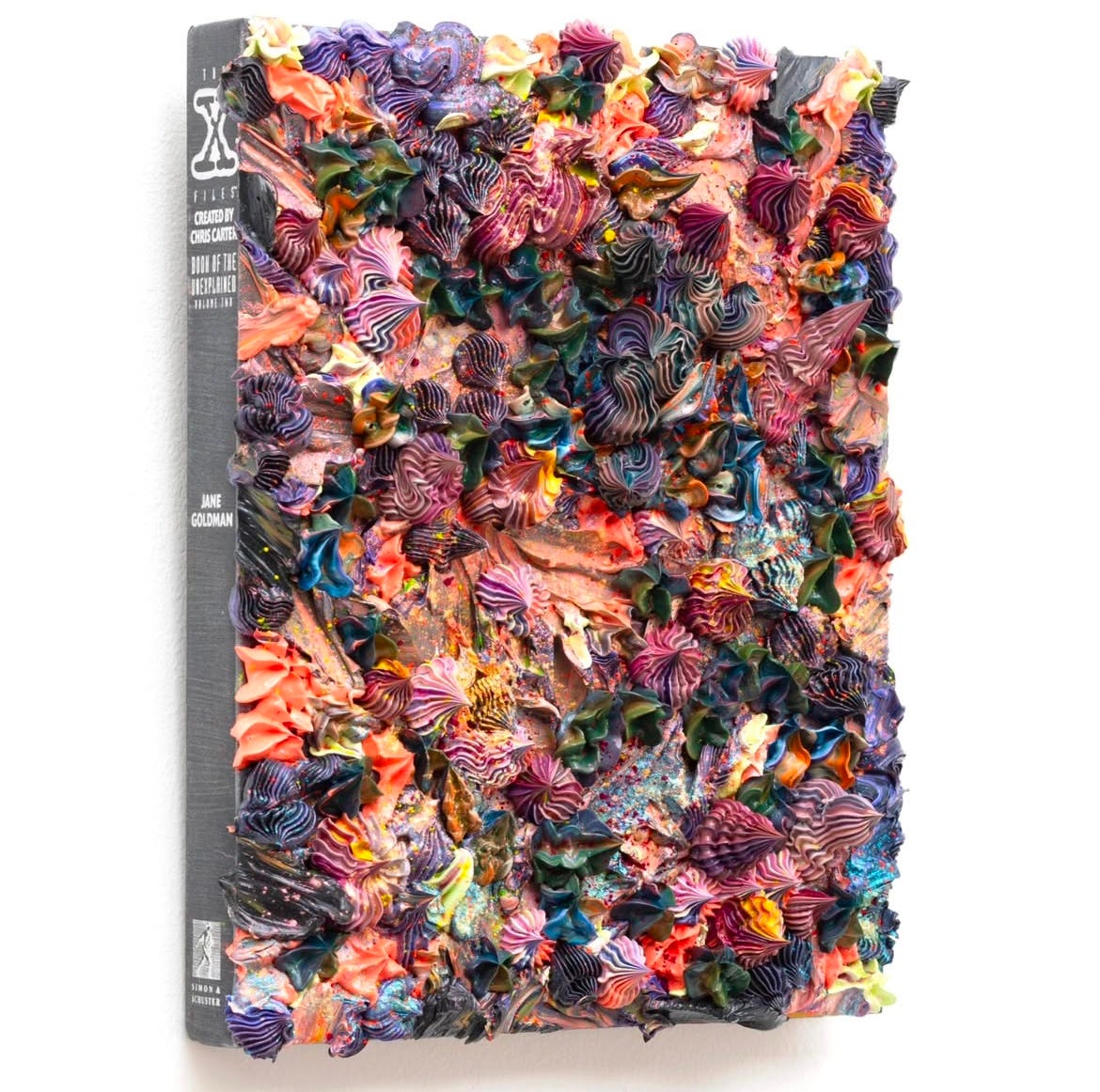
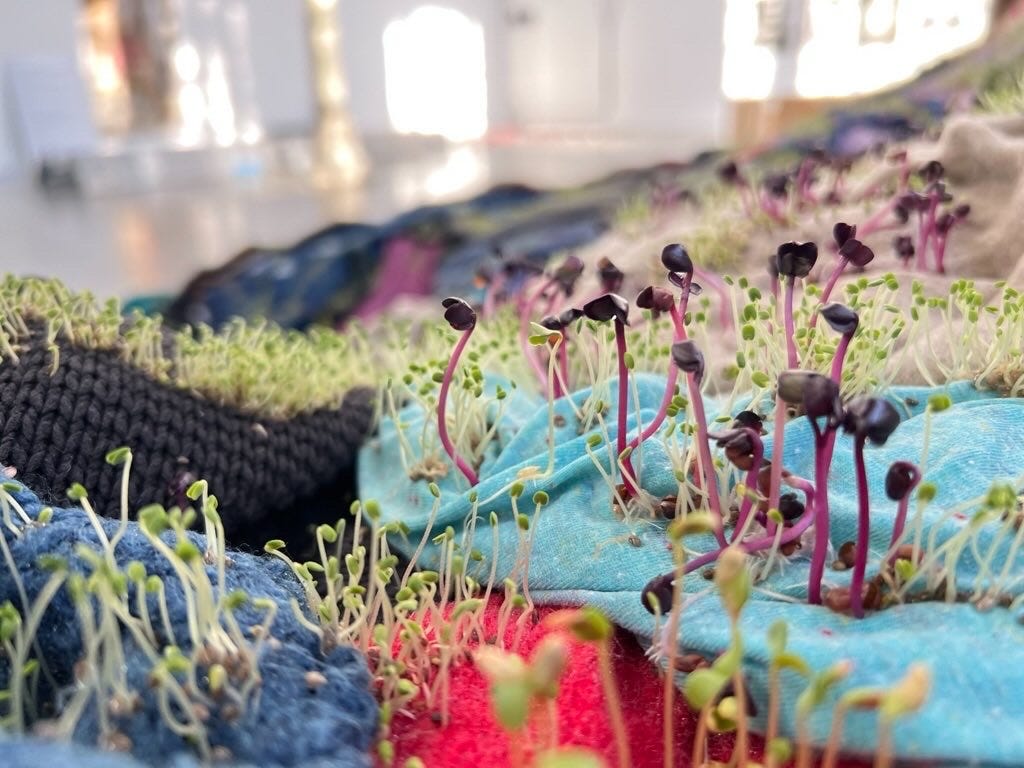

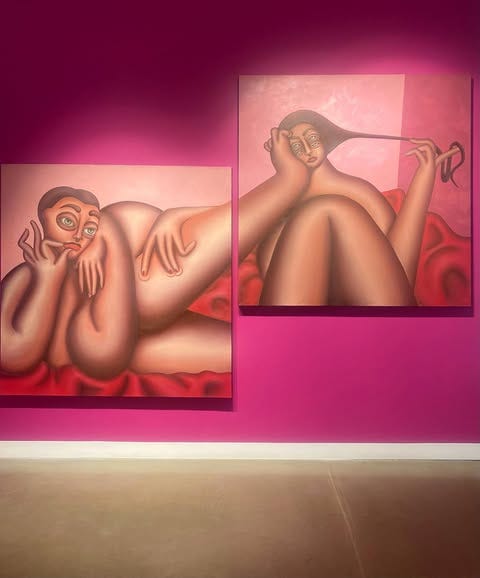
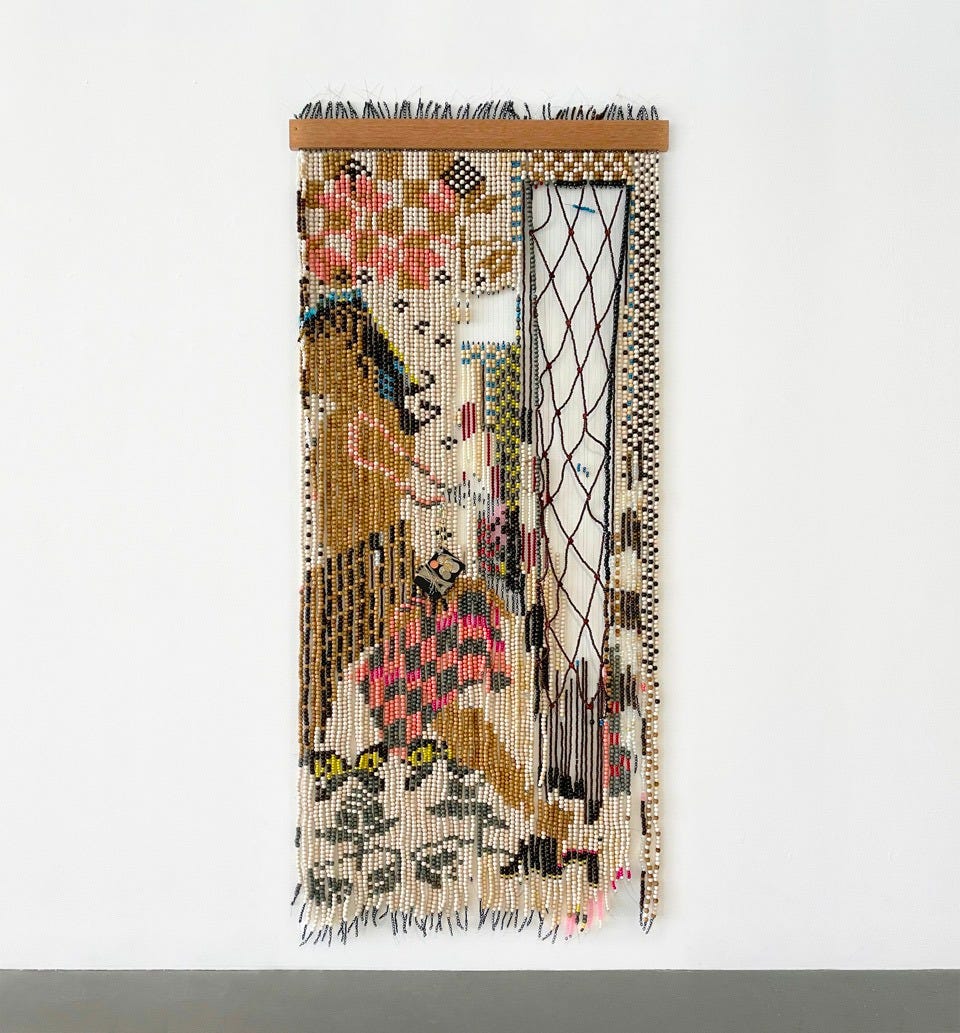
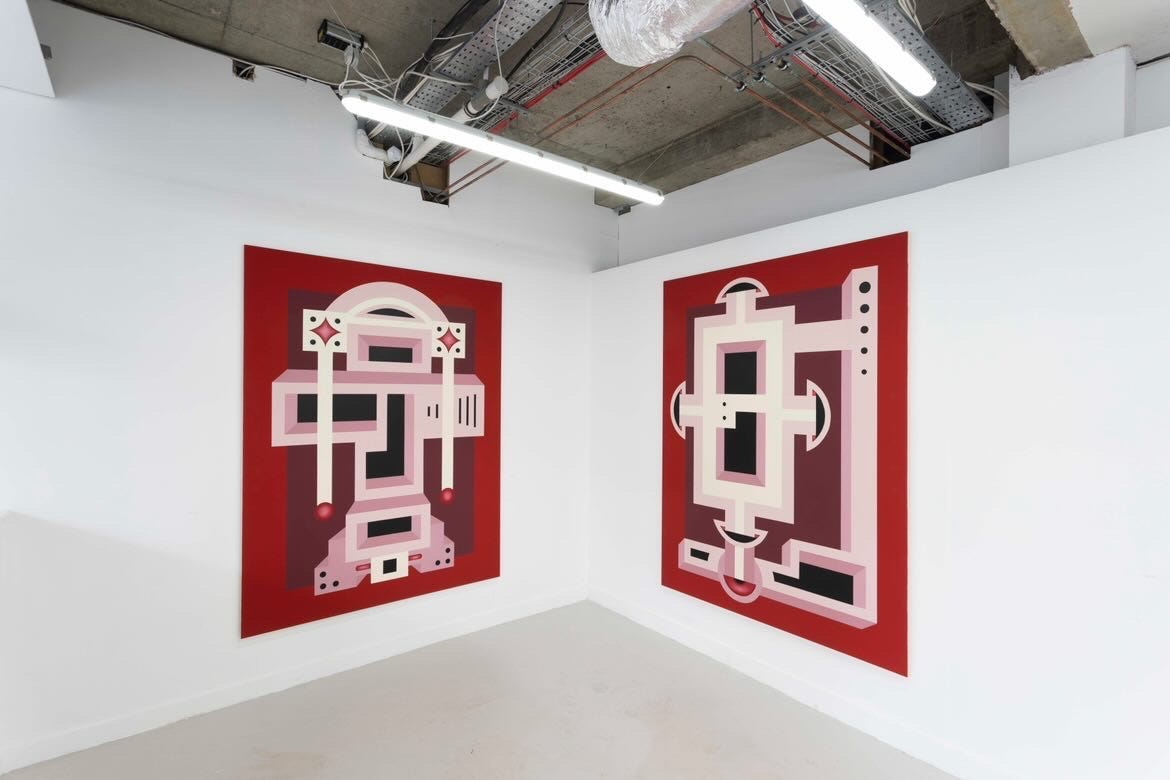
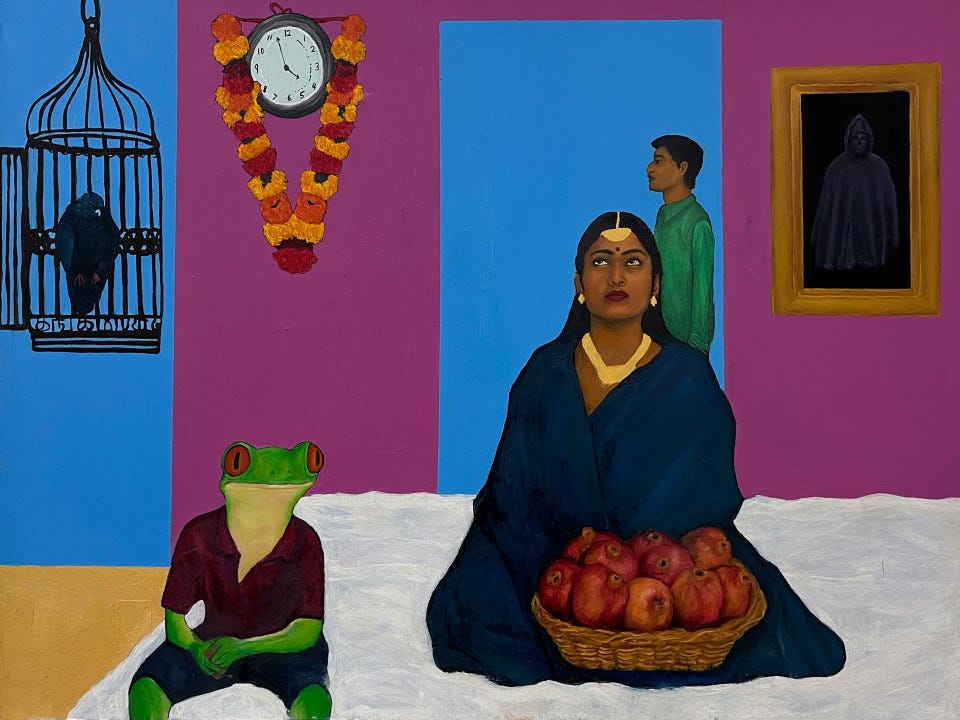
I particularly like the mystical work of Dymock. Thanks for sharing